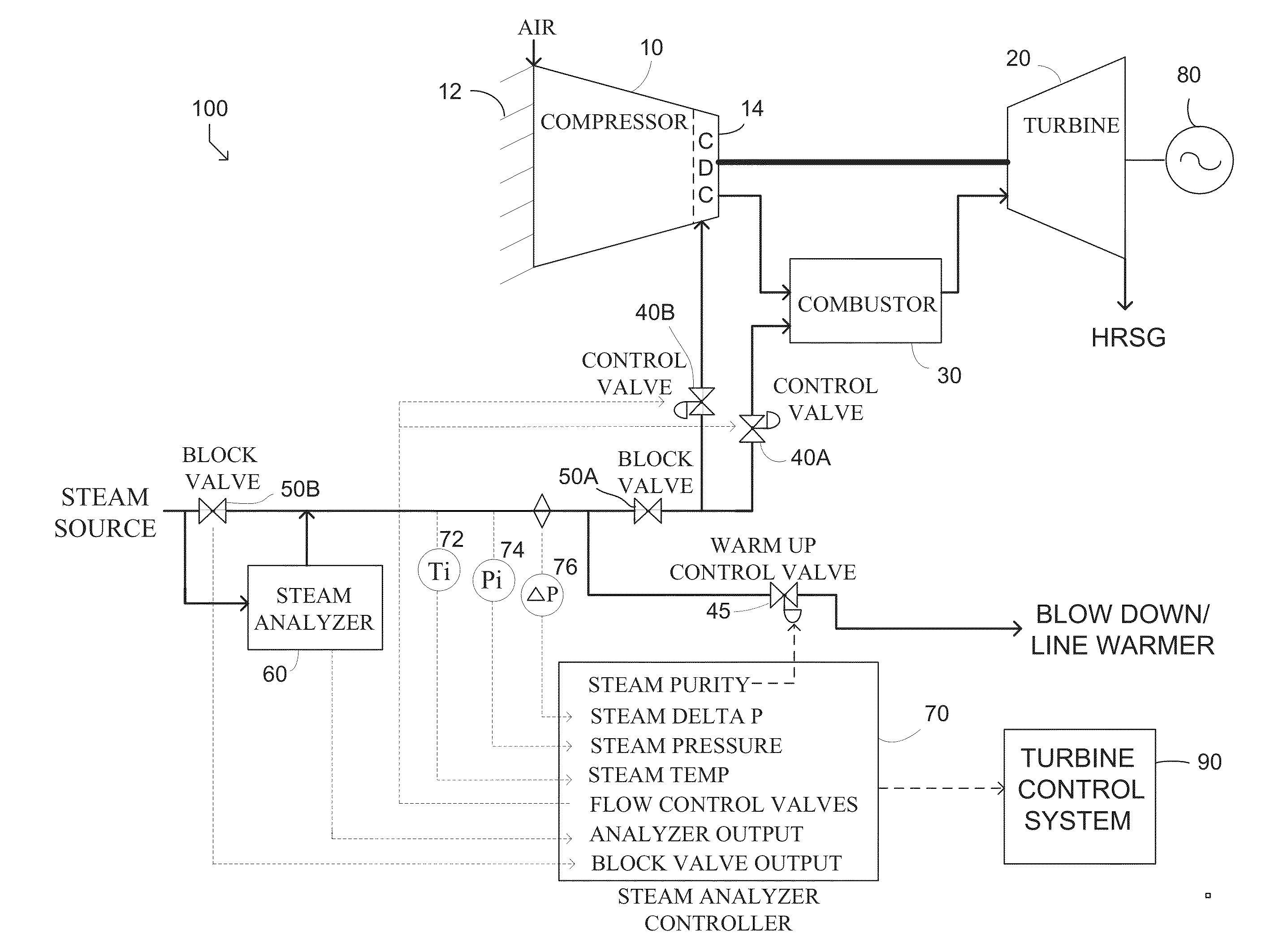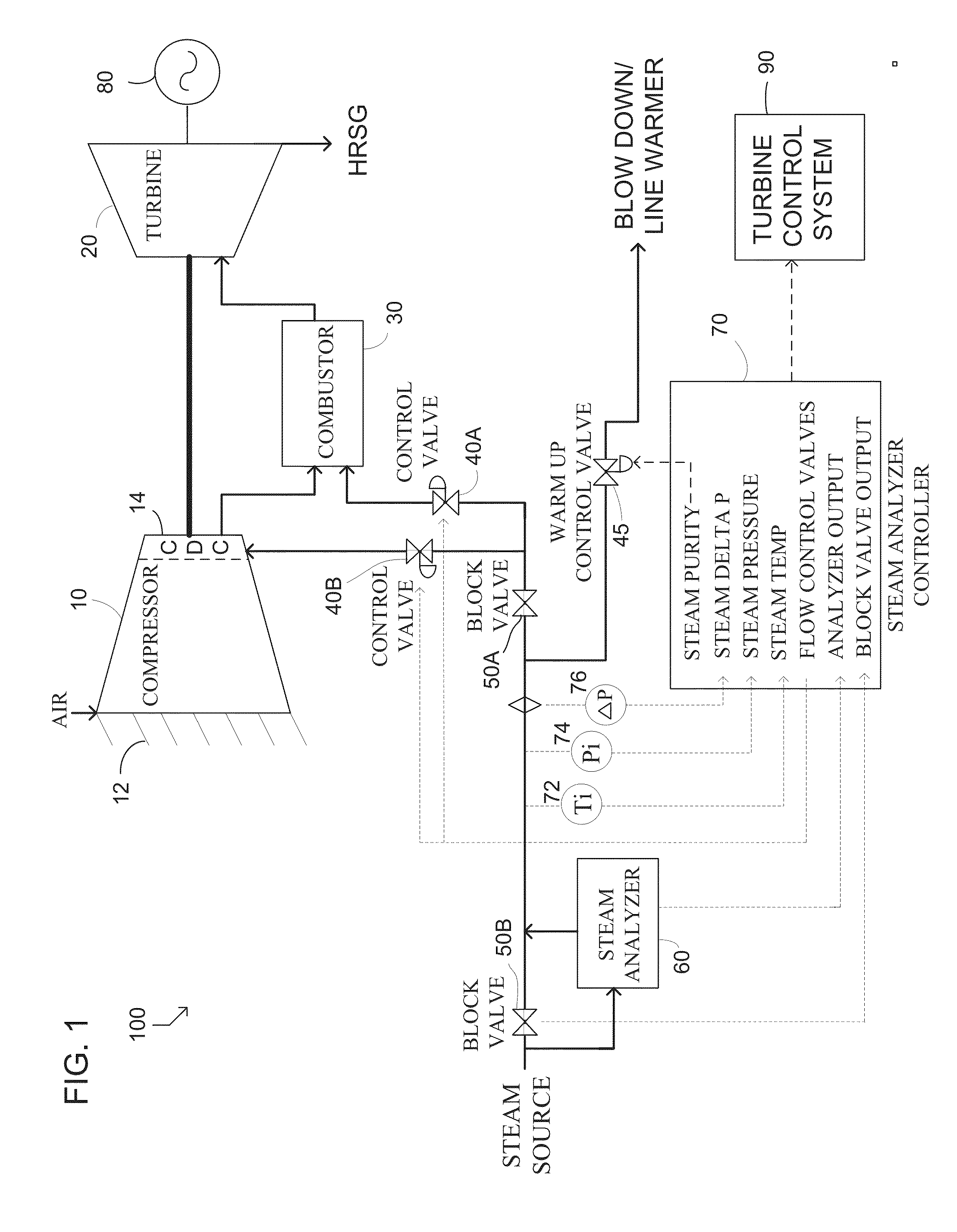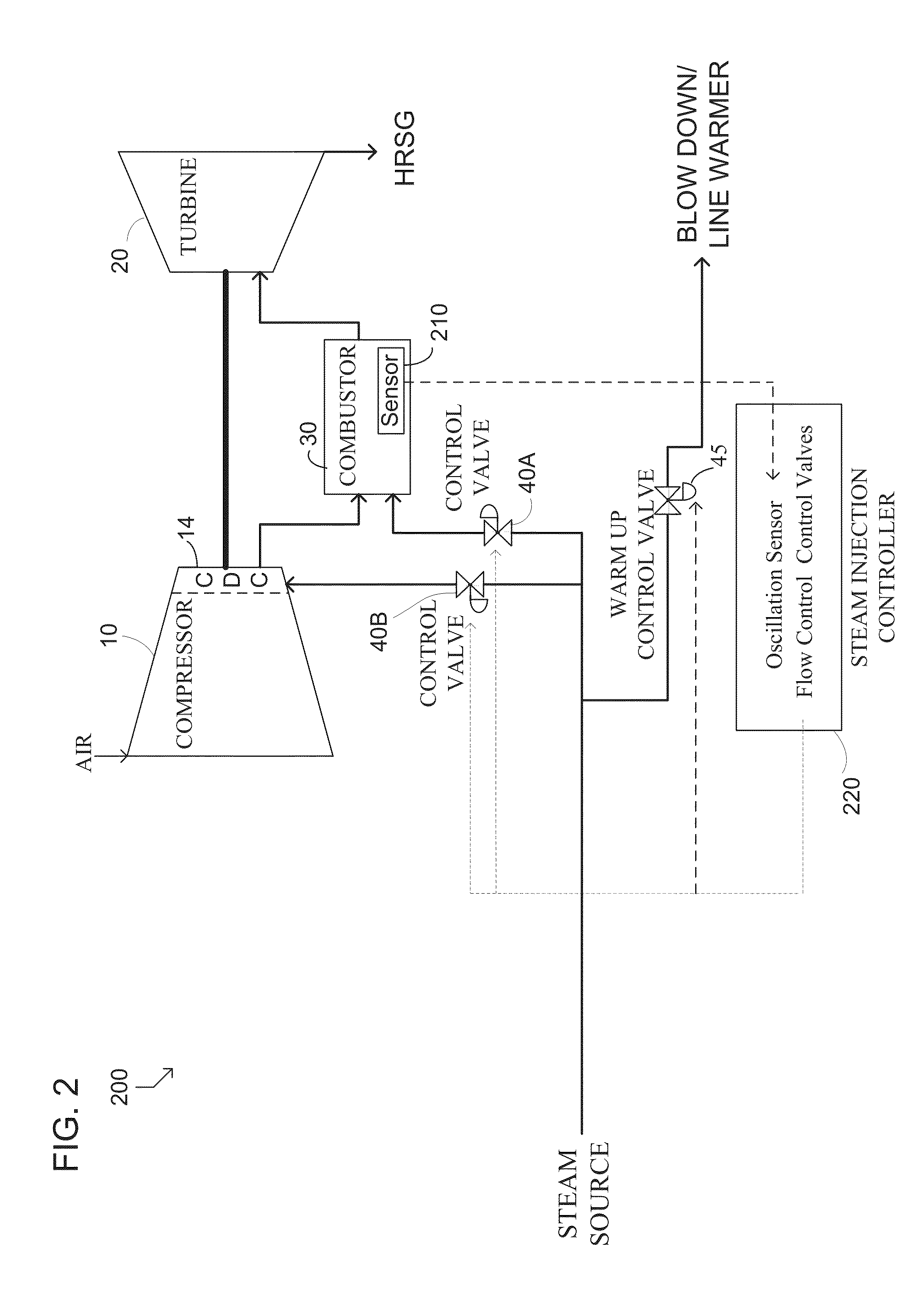Mitigation of Hot Corrosion in Steam Injected Gas Turbines
- Summary
- Abstract
- Description
- Claims
- Application Information
AI Technical Summary
Benefits of technology
Problems solved by technology
Method used
Image
Examples
Embodiment Construction
[0022]Referring to FIG. 1 of the drawings, there is shown a functional block diagram of a representative embodiment of a gas turbine system constructed in accordance with the present disclosure. In the illustrated embodiment, the gas turbine system 100 can include a gas turbine 20 which may drive an electric generator 80. Based upon chemical analysis of the steam purity and quality, a block valve 50A may inhibit injection of steam that does not meet allowable limits from entering the combustor 30 or the compressor 10.
[0023]The compressor 10 can compress the incoming air to high pressure. Air can enter the compressor 10 by way of a variable inlet guide vane mechanism 12 which controls the degree of opening of the turbine air intake and is used to adjust air flow during the startup phase to increase part load efficiency. The combustor 30 can mix the air with fuel and burns the fuel to produce high-pressure, high-velocity gas. The hot combustion gases can flow across a turbine 20 causi...
PUM
 Login to View More
Login to View More Abstract
Description
Claims
Application Information
 Login to View More
Login to View More - R&D
- Intellectual Property
- Life Sciences
- Materials
- Tech Scout
- Unparalleled Data Quality
- Higher Quality Content
- 60% Fewer Hallucinations
Browse by: Latest US Patents, China's latest patents, Technical Efficacy Thesaurus, Application Domain, Technology Topic, Popular Technical Reports.
© 2025 PatSnap. All rights reserved.Legal|Privacy policy|Modern Slavery Act Transparency Statement|Sitemap|About US| Contact US: help@patsnap.com



